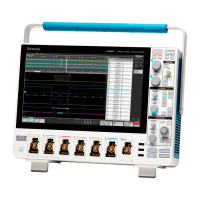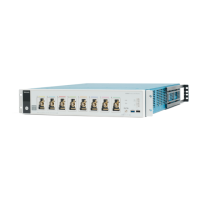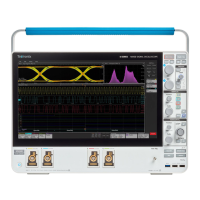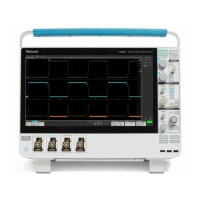T Lo- is the Low reference crossing on the falling edge.
N-Periods Duration measurement algorithm
Duration N-Periods is the time required to complete N cycles.
The source can be configured to be treated as either a clock or data waveform. Given a voltage waveform, the N-Period is calculated as
follows:
If the Signal T
ype is Clock
The N–Period measurement calculates the elapsed time for N consecutive crossings of the mid reference voltage level in the direction
specified.
The application calculates this measurement using the following equation:
Where:
NP Clock is the accumulated period for N clock cycles.
T Clock is the VRefMid crossing time for the configured edge direction.
If the Signal T
ype is Data
The N–Period measurement calculates the elapsed time for N consecutive unit intervals.
The application calculates this measurement using the following equation:
Where:
NP Data is the duration for N unit intervals.
T Data is the VRefMid crossing time in either direction.
If T n+N Data does not exist for a given n, no measurement is recorded for that position.
Negative Duty Cycle measurement algorithm
Negative Duty Cycle is the ratio of the negative pulse width to the signal period expressed as a percentage.
NegativeWidth is defined in Negative Pulse Width, below
.
If Period = 0 or undefined then return an error.
Negative Pulse Width measurement algorithm
Negative Pulse Width is the time (or distance) the signal remains below the mid reference level. It is the distance from a falling edge to the
next rising edge.
Measurement algorithms
2 Series MSO MSO24 and MSO22 261
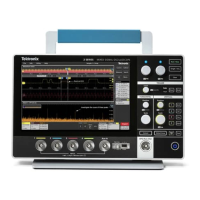
